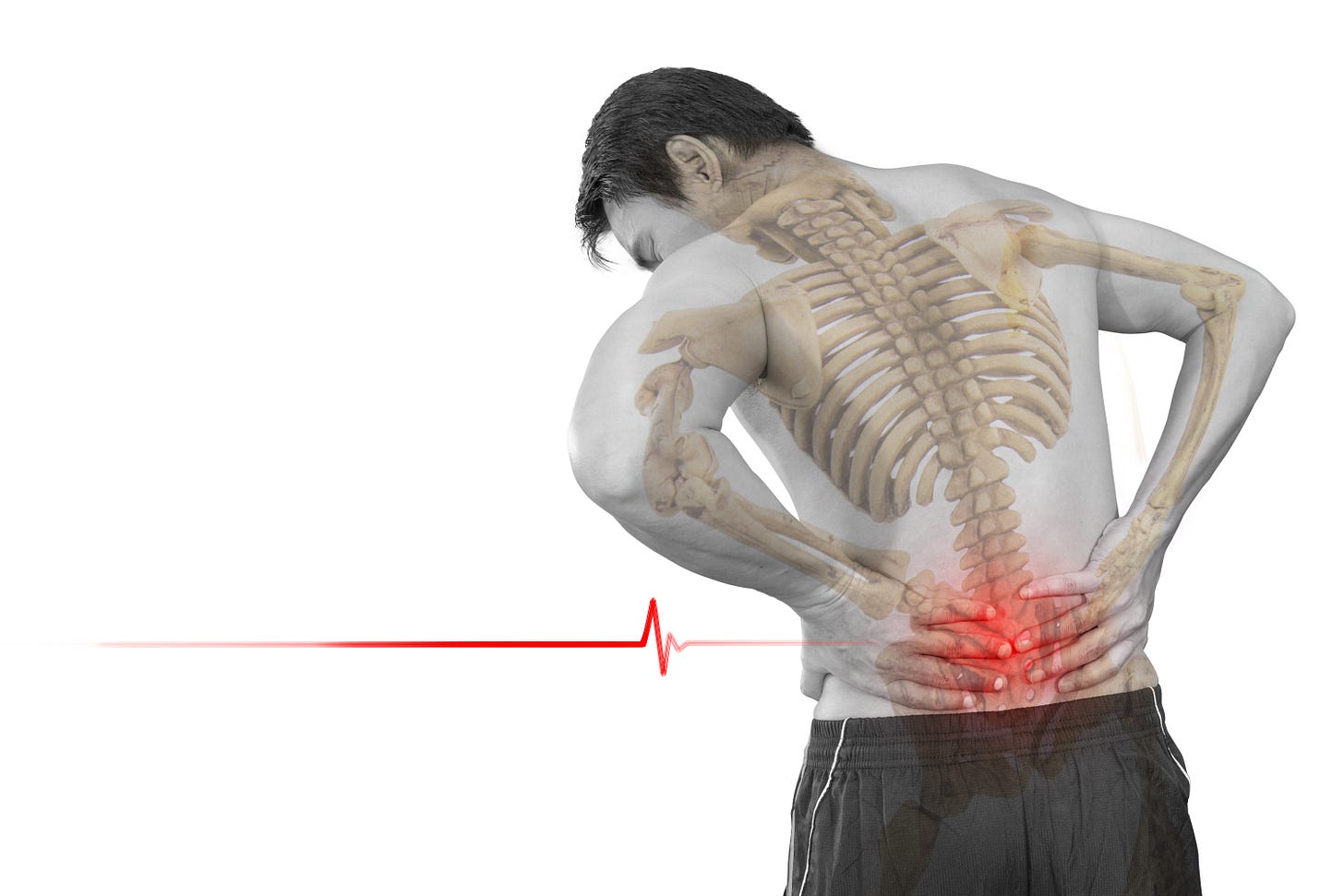Low Back is the most common bodily pain experienced by humans. So How can we solve it and prevent it?
To preface this post, I am not an MD or DO, and I acknowledge that back pain can be a complex issue at times that requires surgery and specialist interventions.
That said, in the 13 years Ive been a personal trainer, the majority of back pain cases can be resolved through conventional exercises and strengthening of the back and spinal muscles.
Is fixing low back pain really as simple as getting stronger? Lets contextual with some principles.
1. Your spine can HEAL. Disc herniations are not a life sentence. The idea that low back pain is a life sentence of chronic pain and you can never do any intense exercise/activities is simply false.
2. Healing will require Graded Exposure to Exercise. This means doing whatever level of exercises/movement you can, at as low and level as necessary, and gradually increasing the intensity of these exercises over time
3. Getting the Spine stronger follows the same principles as strength training, Progressive overload. You need to slowly increase intensity over time
4. Pain and discomfort DURING new exercises is to be expected. It's entirely normal for an exercise to not feel good on the first set. It is normal to be hesitant. So long as pain goes Down over the course of doing the exercise, and pain is not worse the next day, you are making progress.
5. You need to be Patient, and disciplined. You cannot skip workouts, and you cannot expect overnight solutions. Your low back pain could potentially be solved in 12 weeks. But if you stop doing what was working, or you get overly ambitious because of some initial improvement and attempt dumb training and then the pain flares up again, you have no one but yourself to blame.
That Established, Lets walk through what a hypothetical Rehab process looks like
Phase 1, moving the spine, no added resistance
This is always the first phase of rehab, you have to reestablish range of motion. The only resistance is the weight of your own body(and even that can be reduced)
So the first two exercise Id have someone do with be
Bodyweight Flexion and Extension-this is for overall spinal movement
Hatfield Back Extension-this is to directly train the lumbar spine
For Muscle Building, I'd use the most spine friendly exercise possible that doesnt put axial load on the spine, which would be
Chest Supported Seated Row-This is the main back exercise I recommend for everyone, regardless of back pain. Having the chest support makes the movement more stable, there is no sheer force, and practically everyone can do this exercise to some level. It can be adapted many ways
Phase 2, Moving and stabilizing the spine, increasing the resistance
Assuming the above exercises are going well, then we can do exercises that are higher resistance.
Horizontal Back Extension-This targets the glutes and the lumbar extensors
45 Degree Hyperextension-This targets the glutes and hamstrings, and the spinal extensors are working isometrically
Phase 3, Loading the Spine, Increasing Intensity
Assuming we are progressing, now we can do harder exercises.
At this point we should be able to resume "normal" training for the most part.
Sets and Reps would be Moderate to high for all exercises (8-20), and done for 2-4 sets
All movements would be done with full muscle control.
These exercise obviously dont constitute a full body program. They are specific to low back rehab only.



